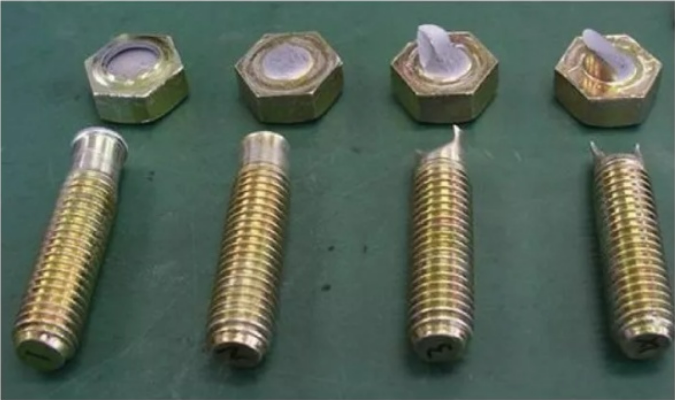Hydrogen embrittlement mainly occurs on low-alloy high-strength steel, stainless steel and elastic parts, which naturally also include fastener products.

What happens when fastener products undergo hydrogen embrittlement? Hydrogen embrittlement of fasteners usually occurs within a few hours of the first stress application. When the fastener is tightened, the hydrogen is transferred towards the part of the highest stress concentration, causing the pressure to increase beyond the strength of the base metal and Produces tiny surface cracks. After the formation of such small cracks, active hydrogen will soon seep into the newly formed cracks. This “pressure-rupture-infiltration” cycle continues until the fastener fails.
So why does hydrogen embrittlement occur in fasteners? During the processing and treatment of fasteners, especially in the pre-plating pickling and alkali cleaning of the surface treatment process and the subsequent electroplating process, a part of the hydrogen on the metal coating and the metal surface will penetrate into the metal. At this time, there is a high hydrogen content in the fastener, and when a certain external force acts, hydrogen embrittlement may occur.
Since the hazard of hydrogen embrittlement of fasteners is so serious, how to eliminate the threat of hydrogen embrittlement? Through practice, we found that after the surface treatment process of the fastener product is completed, it should be dried at low temperature as soon as possible, so that hydrogen can seep out of the fastener product. The low temperature here is usually controlled at 176 to 190°C. The processing time is usually 3 to 24 hours.
Since hot-dip galvanizing is mechanical galvanizing rather than electrolytic galvanizing, this avoids hydrogen embrittlement. Due to engineering standards, hot-dip galvanizing of fasteners with a hardness higher than HRC35 (imperial Gr8, metric grade 10.9 or above) is prohibited. Therefore, hydrogen embrittlement rarely occurs in hot-dipped fasteners.
Post time: Mar-01-2023
